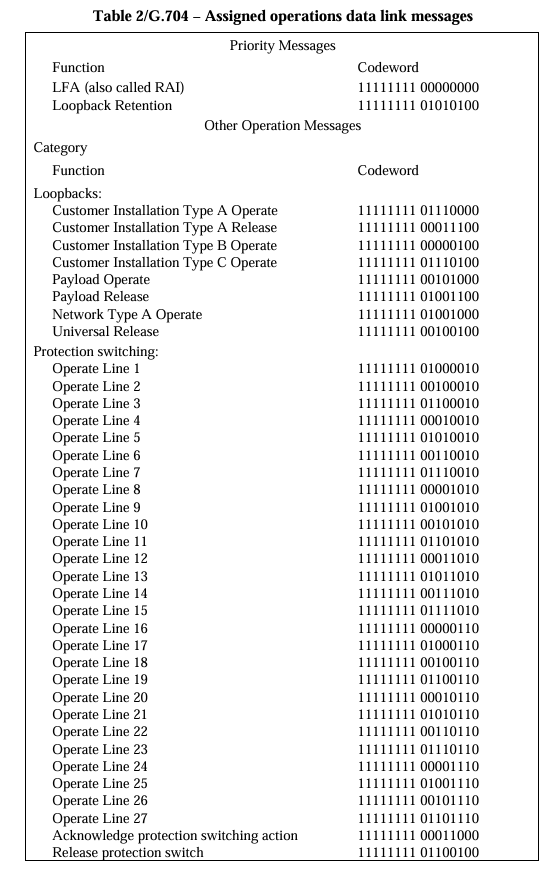T1 lines are a foundational technology in digital telecommunications, crucial for carrying voice, data, and ISDN PRI services. To optimize the performance and reliability of T1 circuits, it’s essential to understand the underlying principles of line coding, framing, and signaling. This guide covers these aspects comprehensively, with a focus on the key techniques and protocols used in T1 systems.
Table of Contents
T1 Line Coding: AMI and B8ZS
T1 line coding is the method by which digital signals are encoded for transmission over T1 circuits. The two primary line coding schemes are:
- AMI (Alternate Mark Inversion): AMI is an older line coding technique where the ‘1’ bits alternate in polarity (positive and negative) to maintain a zero DC level. The downside of AMI is its vulnerability to synchronization loss during long sequences of zeros.
- B8ZS (Binary 8 Zero Substitution): B8ZS is an enhancement over AMI, designed to overcome the synchronization issue by replacing sequences of eight consecutive zeros with a special pattern of bipolar violations. This method is widely used in modern T1 circuits because it maintains synchronization regardless of the data pattern.
The choice between AMI and B8ZS impacts the T1 line’s performance, particularly in environments where long strings of zeros are prevalent.
For more on T1 line coding, you can explore this detailed guide.
T1 Framing: D4 Super Frame (SF) vs. Extended Super Frame (ESF)
T1 framing structures the data transmitted over a T1 line. A T1 frame is composed of 24 8-bit time slots (channels) and a single framing bit, making a total of 193 bits. These frames are transmitted at a rate of 8000 frames per second. The two primary framing formats are:
- D4 Super Frame (SF): Also known simply as SF, this framing format groups 12 T1 frames together. SF is basic, providing minimal synchronization and signaling capabilities.
- Extended Super Frame (ESF): ESF is an advanced framing format that groups 24 frames and includes additional signaling and control bits. ESF offers enhanced network management, error monitoring through CRC (Cyclic Redundancy Check), and a Facility Data Link (FDL) for maintenance and control.
ESF is generally preferred for its advanced features, especially in networks where error monitoring and management capabilities are critical.
For more details on T1 framing formats, refer to this resource.
T1 Signaling: Voice, Dedicated Data, and ISDN PRI
T1 signaling is vital for managing communication sessions over T1 lines. Depending on the application, different signaling methods are used:
- Dedicated Data T1 Circuits: In these circuits, signaling is not required, so it is typically disabled. Framing bits in SF or ESF are used solely for synchronization.
- Voice T1 Circuits: Voice circuits require signaling to handle call setup, maintenance, and teardown. In-band signaling, known as CAS (Channel Associated Signaling) or “robbed-bit signaling,” is employed. This method slightly reduces bandwidth but does not significantly affect voice quality.
- ISDN PRI Circuits: For ISDN PRI, signaling is managed out-of-band using a dedicated D channel (usually TS-24). This method, known as CCS (Common Channel Signaling), allows for more efficient and reliable signaling without interfering with the user data channels.
CAS signaling can be implemented using protocols such as Ground/Loop Start or E&M Wink/Delay/Immediate signaling.
To learn more about T1 signaling, visit this documentation.

T1 Operational Modes
When configuring T1 interfaces, several operational modes are available:
- Unframed (UNF): A continuous stream of bits at 1544 Kbps, with no specific channels or framing.
- Superframe (SF): Data is transferred using the SF format, offering basic synchronization and signaling.
- SF + CAS: SF framing with Channel Associated Signaling enabled.
- Extended Super Frame (ESF): Enhanced framing format with additional signaling and control.
- ESF + CAS: ESF framing with CAS enabled.
- ESF + FDL: ESF with Facility Data Link for maintenance and control.
- ESF + CAS/CRC/FDL: ESF with CAS, CRC for error monitoring, and FDL.
- CCS (Common Channel Signaling): Used in framed formats by dedicating one channel (usually TS-24) for delivering signaling messages in a predetermined protocol.
Each mode serves a specific purpose, depending on the network’s requirements and the services being delivered over the T1 line.
For further insights on T1 operational modes, check out this resource.
Conclusion
Understanding T1 line coding, framing, and signaling is crucial for optimizing T1 network performance. Whether dealing with voice, data, or ISDN PRI circuits, selecting the right coding scheme, framing format, and signaling method is essential for ensuring reliable communication. By mastering these concepts, network professionals can effectively manage and troubleshoot T1 lines in a wide range of applications.
For more detailed information, you can explore the ITU-T Recommendation G.704 and North American T1 Facilities.
Optimizing your T1 setup will lead to better network performance, reduced errors, and high-quality service delivery across your telecommunications infrastructure.

